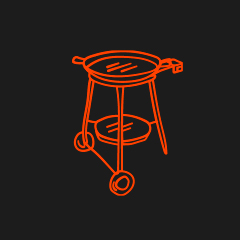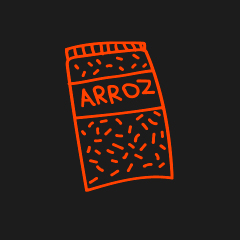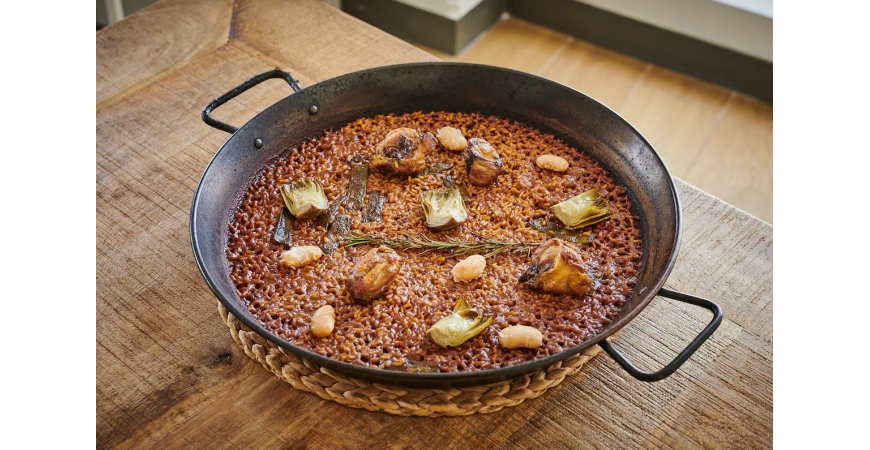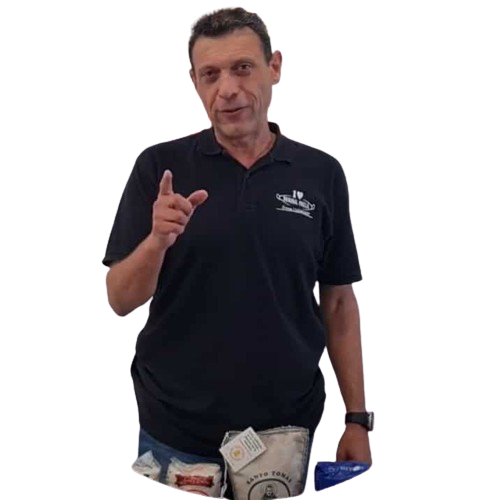¿Paella concava o paella plana?
If there is one thing that is certain in life, it is that there will always be a discussion about which is the best option when two options are proposed: is it better to eat paella with a spoon or a fork? Do I like paella with meat or seafood better? Now, the question that is on everyone's mind is: do I prefer to use a traditional concave paella pan or a flat paella pan?
Social networks are constantly talking about these flat paella pans, with people giving their grain of rice giving their opinions, advantages and disadvantages, whether they will alter the culture of rice or the culture of paella... We, as paella lovers and experts, also want to give our opinion on this matter.
In this blog post, we propose the advantages, disadvantages and the whys of this debate between concave paella pans and flat paella pans.
Where does the debate about concave or flat paellas come from?
Debate is perhaps too big a word for this event, no one has started shouting (except perhaps on social media) but it is true that lately, influencers, chefs and cooks from the gastronomic world have started to talk about the use of flat paella pans instead of concave ones to make rice and paellas.
Truly, when we talk about making a paella, both versions of these paella pans can make us a paella without problem, it is something that we have been able to verify ourselves with induction paellas, after all, no matter how much the paella pan we use is flat or concave, it is still a paella pan.
The real reason for the debate lies less in whether one is better or worse for making a classic paella and more in what we could call "gourmet paellas", that is, paellas whose layer of rice is one grain (or almost one grain) that aim to delight our mouth in the style of a 5-star restaurant.
This is where we can find the biggest difference between which is better, since, as much as both prepare a classic paella perfectly, using one over the other can make it easier to obtain these gourmet paella rice dishes.
Some have even raised the question of whether this type of rice could replace or alter how the rest of the rice dishes are made, although understandable as far as speculation is concerned, it sounds a bit impossible.
There will always be someone who wants a Valencian-style paella, in the same way that there will be people who want it with more or less rice or, as is happening right now, with the smallest amount to enjoy the concentrated flavor of each grain.
Rather than replacing, we think that it is most likely that this new style of cooking rice will become exactly that, a new style of paella to enjoy with our guests, experiment with and create new and delicious recipes.
Advantages and disadvantages of flat paella
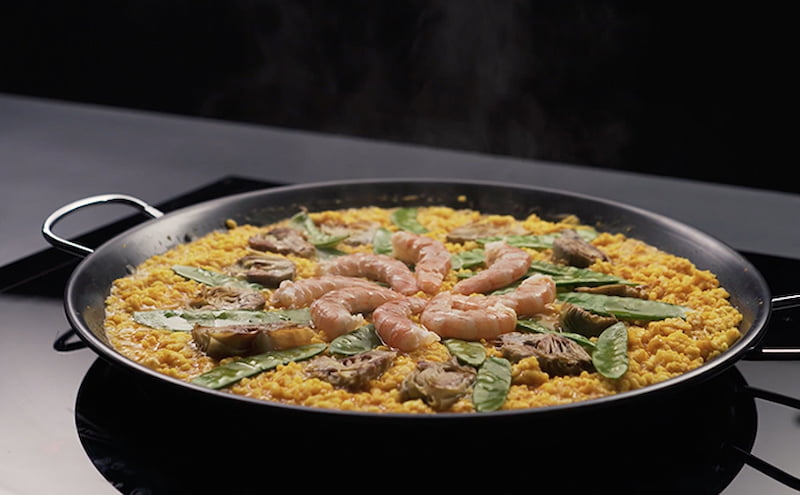
Let's start with what we could call the most innovative version of paella at the moment and which we are perhaps not so familiar with: the flat paella.
This version of the paella was mainly designed to make paellas on induction and ceramic hobs (as we explained in one of our blog posts) but it can also be used perfectly with gas burners or hobs.
The main advantage that many chefs and influencers point out about this type of paella for making gourmet paellas is that, unlike the traditional paella, which has a concave bottom, this version of the paella is completely flat.
What was originally thought of as a way to facilitate contact with the induction/ceramic hob has become the latest trend in the culinary world, as its flat surface makes it easy to obtain these "finger rices" or fine rices, without the concave shape of a traditional paella making this task more difficult to calculate or get around.
Its flat shape also does not make it difficult to make stir-fry or prepare meat/seafood, some even prefer it, as the flat surface makes it easier to cook meat and vegetables throughout the available space, while others prefer the concave shape, as the oil is concentrated mainly in the centre of it, making it easier to gather all the ingredients in one place during the process. As we can see, it is all a matter of taste.
Its biggest disadvantage comes not necessarily from its shape or technical characteristics, but from its lack of sizes. Originally designed for induction hobs, flat paella pans do not come in large sizes, with the largest being 50 cm, which means that we cannot use this version of the paella pan for thin paellas for many diners.
This is understandable, as this new use was not considered at the time, perhaps if this new style of rice recipe becomes common, manufacturers will consider making larger sizes.
Advantages and disadvantages of concave paella pans for gourmet rice dishes

The classics never go out of style, the concave paella pan, considered by many through generations as the traditional paella pan par excellence, is also capable of making these "gourmet paellas", after all, we always appreciate fine paellas or Valencian style paellas, but this style of recipe can be somewhat more difficult to make due to its shape.
The concave shape of the traditional paella pan hinders the process of making a singular fine layer of grain rice on the paella, since the gravity of the paella, due to its shape, leads to wanting to leave a greater amount of broth and rice in the center and therefore, requires an additional amount of extra rice in it to maintain this homogeneous shape so unique to this style of cooking rice. Of course, this does not prevent you from making it, it is simply a little more difficult.
Its main advantage over flat paella pans lies in its size, since unlike the flat paella pan, the possible sizes of the concave paella pan are much larger, perfectly reaching, without the need to order from a specialized store or manufacturer, 115 or 130 cm, and even larger sizes can be found.
So, what type of paella is best for this kind of rice cooking?
Truly, which of these two types of paellas we consider better ultimately comes down to our own tastes, rather than objective data or unique characteristics.
A concave paella pan can make us a fine or gourmet paella, but it is a somewhat more difficult task due to its shape, even so, its wide range of sizes means that we can feed a gourmet-style paella to a greater number of diners.
Similarly, a flat paella pan makes it easier to make fine paellas, as it helps maintain that uniformity in the layer of rice that is so sought after for this style of recipe, but it can be considered by some to be the more difficult option for making a classic paella and its limited range of sizes, therefore, affects the number of diners that you can feed with one, being more limited.
The important thing is that this new way of making paellas and rice dishes has brought new life to the world of rice cooking, where innovation is always appreciated alongside the classics, of course, as long as care is taken to create new recipes and ways of making rice with logic and knowledge.

We are looking forward to this new culinary technique, which has been tested and popularised some time ago through the use of llaunas, which have even earned the popular name of rectangular paella pan, and which we can find in restaurants to make these fine rice dishes.
Although we do not believe that it will become a substitute for the traditional concave paella, it could be an interesting alternative that can coexist with it, offering a new culinary and gastronomic experience to those with refined palates, curious taste buds or who simply want to try something new and trendy in the world of rice dishes.
We hope that this brief entry has helped you discover this new style of paella and which type of paella pan would be most suitable for you to try it in your own home, best regards, rice lovers!

